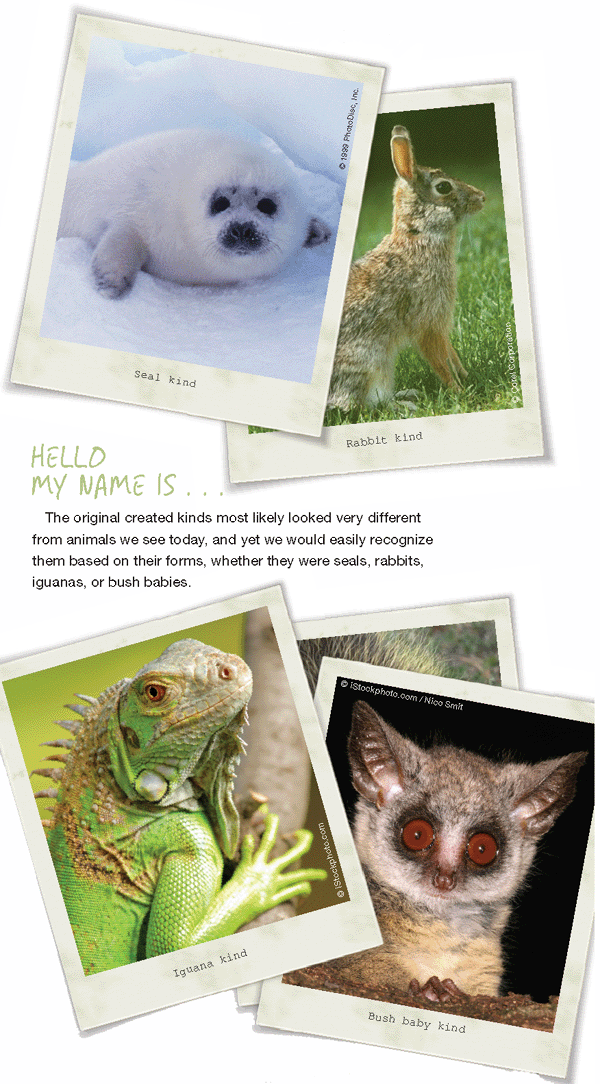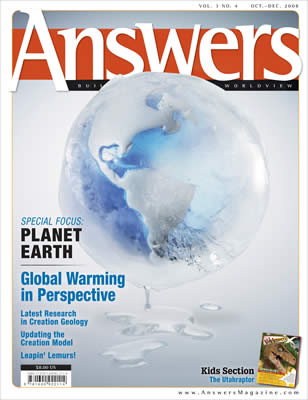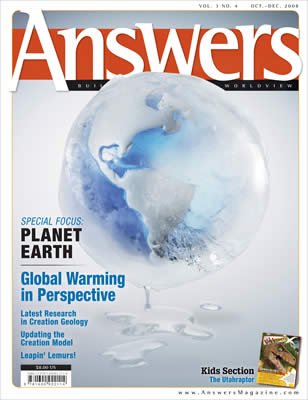Bara-What?
Part 1: The Created World
Imagine Adam’s wonder as he beheld the first cattle, birds, and beasts of the field. His first task was to name each kind of creature he saw. But what were those original “kinds” (Min in Hebrew) and what do their descendants look like today? The desire to classify modern creatures—based on the original created kinds—has spawned a new field of biology known as baraminology.
At the culmination of Creation Week, God created Adam, and Adam gave names to “all cattle, and to the fowl of the air, and to every beast of the field” (Genesis 2:20, KJV). Giving names to things seems to be very important in God’s plan. It’s a token of authority and a sign of personal knowledge about the object named.
By naming the animals, Adam exercised his position as the image of God on earth.
God first showed His power and authority by naming the things He created, such as “day” and “night” and “earth” and “seas.” Then God let Adam share that power through his own naming. By naming the animals, Adam exercised his position as the image of God on earth. Today, we still discover new things, like Adam, and we exercise our authority as images of God by naming these things.
What exactly did Adam name? Did he name them all individually (such as Stephanie, Roger, Connie), or did he give them category names (such as cat, dog, bear)? We know that it didn’t take very long, since God made Eve after Adam finished naming. It would be hard to name every individual animal and bird in only one day. Also, when Adam named Eve, he called her “woman” (Genesis 2:23), suggesting that on the day he was created, Adam gave category names rather than personal names.
As a biologist, the next question that occurs to me is what categories did Adam name? Based on Genesis 2:20, it sounds like he named several subcategories under the three larger categories of “cattle,” “fowl of the air,” and “beasts of the field.” What were these subcategories?
Genesis 1 may give a clue. When God created creatures, He created them “according to their kind.” I suspect that Adam named the same groups, the “kinds,” mentioned in chapter one. I find it very interesting that God stopped naming things Himself when He started creating “according to their kind.” I think He was saving that naming job for Adam.
All these biblical considerations still don’t answer my original question: What did Adam name? Okay, he named the “kinds” of Genesis 1, but what are the “kinds”? Is there any way for me as a scientist to identify the original kinds that Adam named? That’s where baraminology comes in.
Bara-what? Baraminology. The word comes from a term that pioneer creation biologist Frank Marsh invented, baramin. In Marsh’s words, “I recommend the coining of a new word to represent the Genesis kind. . . . What could be more appropriate than to build this word from the two Hebrew words ‘bara’ (created) and ‘min’ (kind)? This would give us the word ‘baramin.’”1
The modern field of baraminology attempts to identify those created kinds using sophisticated mathematical formulas to identify categories of creatures.2 We think these categories are likely the categories that Adam originally named, even if they might look different today.

Baraminologists have made a lot of progress, but we still have a long way to go.3 We have identified only a handful of created kinds out of thousands that are expected to exist.4 We hope that future research in this area will identify more of the created kinds and new ways of recognizing and verifying their identity. By doing so, we will continue to exercise dominion over creation and display the image of God on earth, just as Adam did at the beginning of the world.

Answers Magazine
October – December 2008
In this issue get the latest information on the current creation models and down-to-earth information about global warming. Also, you won’t want to miss the Kids Answers section about dinosaurs.
Browse IssueFootnotes
- F. R. Marsh, Fundamental Biology (Lincoln, Nebraska: Self-published, 1941), p. 100.
- E.g., see D. A. Robinson and D. P. Cavanaugh, “A Quantitative Approach to Baraminology with Examples from Catarrhine Primates,” CRSQ 34 (1998):196–208; T. C. Wood, “Visualizing Baraminic Distances Using Classical Multidimensional Scaling,” Origins 57 (2005):9–29.
- T. C. Wood, “The Current Status of Baraminology,” CRSQ 43 (2006):149–158.
- Remember that Adam only named “beast of the field and fowl of the air” (Genesis 2:19) and did not name every created kind. For an estimate of the total number of created kinds, see A. J. Jones, “How Many Animals in the Ark?” CRSQ 10 (1973):102–108.
Recommended Resources

Answers in Genesis is an apologetics ministry, dedicated to helping Christians defend their faith and proclaim the good news of Jesus Christ.
- Customer Service 800.778.3390
- Available Monday–Friday | 9 AM–5 PM ET
- © 2025 Answers in Genesis





